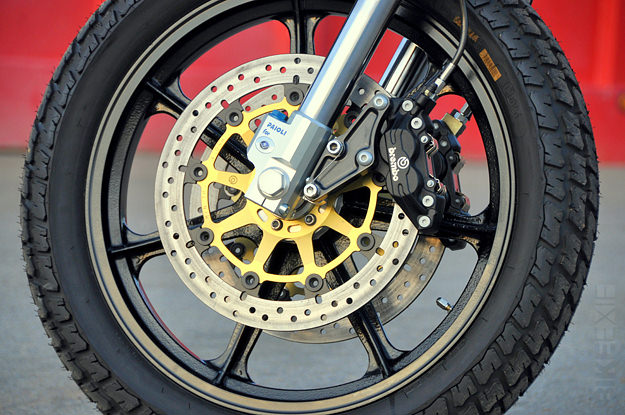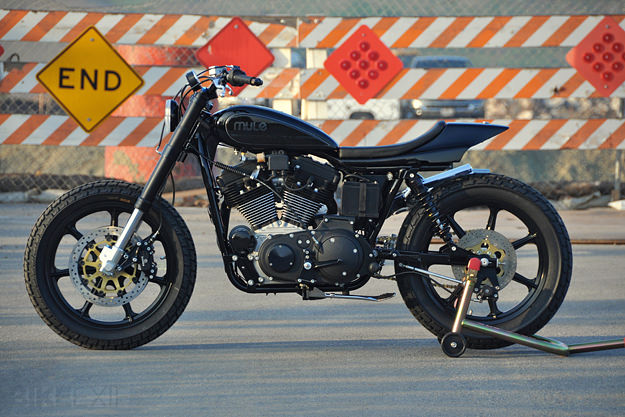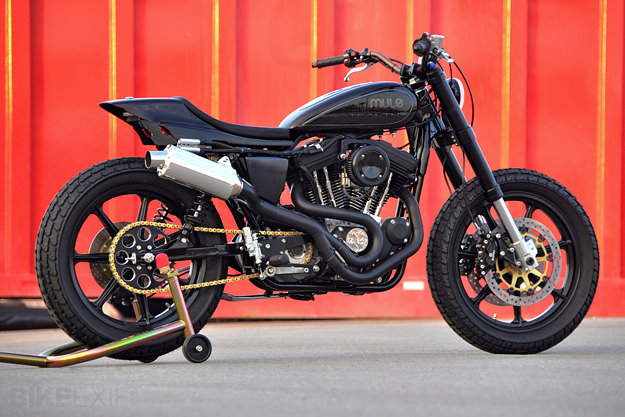
By David Edwards—Here’s the latest street-tracker from Richard Pollock at Mule Motorcycles, a 1200 Harley nicknamed “Stealth” due to its black and dark-gray color scheme. Bound for the concrete canyons of New York City, its new owner is Brooklyn avant-garde sculptor Matthew Day Jackson.
While Jackson supplied the base bike, a 2000 big-bore Sportster Sport, about the only items that remain untouched are the main frame loop and the center engine cases. Everything else has been “Mule-ized.” Wanting to mimic the aggressive look of old XLCHs, Pollock moved the shock mounts forward about six inches on the swingarm, which required that the rear subframe be totally reworked to match. Front suspension duties are handled by a jumbo Italian-made Paioli inverted fork (56mm tubes at the top clamp, 58mm at the lower). These were sold by Custom Chrome as part of a sporty H-D Big Twin “bike-in-a-box” kit that failed to find an audience. When the unsold surplus inventory was auctioned off, Pollock ended up with several sets of forks and triple-clamps.
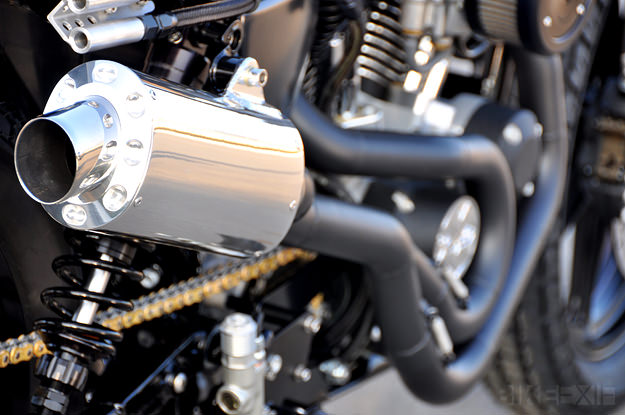
More parts repurposing attached to those forks: What looks like a 19-inch Morris mag wheel is actually cast aluminum as fitted to Kawasaki cruisers in the 1980s, available used on eBay for $150 or less. Same deal at the rear, except it was sent out to Kosman Specialties to be widened. Brembo four-piston Goldline brake calipers are another online score at less than $100 per piece.
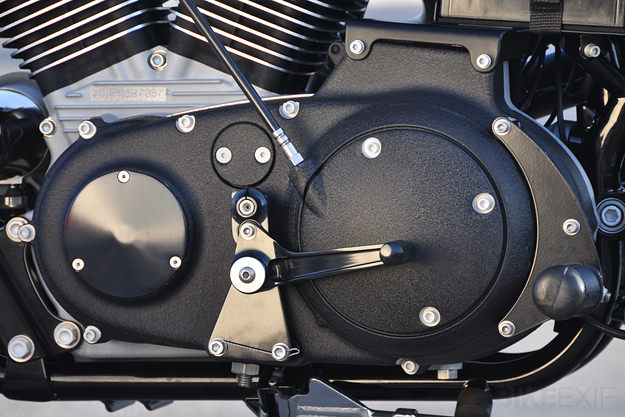
A used Vance & Hines sportbike muffler was shortened by half, polished up, and attached to a swirling set of custom-bent headpipes. Of course, not everything is from the used-parts bin. A new multi-function Motogadget analog tachometer with digital speed readout lives atop the triple-clamps, not far from the slick little PIAA driving light.

Sportster-savvy readers may notice something subtly different about the primary cover. Pollock never has liked the stock downward-facing clutch cable attachment point, which forces the cable to run alongside the motor and up the frame’s front downtube. So here he lopped off the clutch dome and rotated it about 40 degrees clockwise before rewelding for a more direct shot at the handlebars. While he was at it, he sectioned off the crankshaft dome and fashioned a three-bolt cover in its place. Now when Pollock wants to time the engine he can do it with a socket and breaker bar on the crank end, instead of having to put the engine in gear and rotate the rear wheel by hand while he peers through a tiny porthole on the right side.
Stealthy and sensible, who knew?
